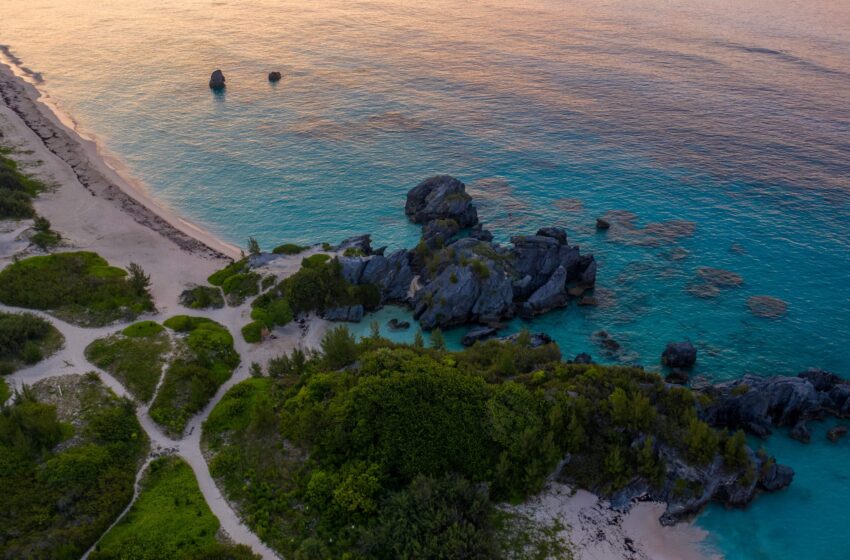
Bermuda’s Only Travel Guide You Need For A Great Trip in 11 Easy Steps
- Destinations Americas
Cruisit Team
- May 24, 2022
- 0
- 4673
- 78 minutes read
Bermuda’s Background
Bermuda was founded in 1609 by shipwrecked English colonists on their way to Virginia. Visiting the island to escape the harsh winters of North America began in the Victorian era. Tourism remains crucial to the island’s economy, albeit worldwide business has recently surpassed it. Bermuda has grown into an extremely successful offshore financial hub. In 1995, an independence referendum was badly defeated.
The island of Bermuda is a self-governing British overseas territory situated in the middle of the Atlantic Ocean, a short plane flight from major Northeastern cities in the United States, off the coast of North Carolina, and north of the Caribbean.
But it’s considerably more diversified than that, with elements from Britain, North America, Africa, Portugal, and West Africa all contributing to the distinctive cultural mash-up. Bermuda’s museums and art galleries offer touches of urban refinement, and its many forts draw history enthusiasts, while its varied geography makes it excellent for all manner of water sports, hiking, golfing, or simply relaxing on a picture-perfect pink-sand beach.
It is split up into nine parishes. St. George’s Parish includes the ancient town of St. George as well as the island of St. David’s. Hamilton Parish is home to the Crystal Caves and the Bermuda Aquarium, while Smith’s Parish is home to Flatts Village, Spittle Pond Nature Preserve, and Devil’s Hole Aquarium. Paget Parish is home to several resorts, as well as Elbow Beach and the Bermuda Botanical Gardens. If you want to play golf, go to Warwick Parish, while the nicest beaches are in Southampton Parish. Devonshire, Pembroke, and Sandy’s Parishes are among the others.
Bermuda is a beautiful vacation destination with a variety of attractions and activities. Bermuda, surrounded by dangerous reefs and bathed in the warm turquoise waters of the Sargasso Sea, is one of the world’s best diving locations. This British territory offers a fascinating island holiday with breathtaking caverns and exquisite pink-sand beaches, as well as small villages and historical museums dedicated to its naval heritage.
With its pastel-colored buildings and big estates drowning in lush foliage and perfumed frangipani and bougainvillea, and its step-like white roofs poised to soak up precipitation, the island feels like a beautiful slice of rural England lifted into warmer climes.
“Bermuda, a place in the midst of the Atlantic with diversified influences by different countries across the planet, is only a few hours away and ready to be discovered by the adventurous wanderer.“
Bermuda is made up of 138 islands and islets that run east-west. Bridges connect the larger islands. The southernmost half of the region has the nicest beaches, and the majority of the islands are made up of low hills and complicated rivers. The capital is Hamilton, which is located in Pembroke Parish, while St. George is the historical capital and the oldest surviving English New World settlement.
The island country’s climate is subtropical, with hot and humid springs, summers, and autumns, but moderate winters. During the winter, water temperatures are also relatively low. Like the southern coast of the United States, the Gulf Stream keeps water temperatures higher than you may think.
As you step off the airport or cruise ship onto Bermuda’s beaches, a sensation of joy washes over you. Bermuda’s bright pink and yellow buildings with white roofs, tranquil blue waters, friendly people, and beautiful year-round weather are just a few characteristics that will make your visit even more enjoyable and leave you wanting to return.
Your experience is heightened even further with top-tier resorts in the capital city of Hamilton and on the island’s most recognized stretch of beach in Southampton. If you grow weary of sunbathing next to infinity pools and being treated at exquisite spas, there are plenty of golfing and aquatic sports to choose from.
Bermuda is arguably best known for the inexplicable disappearances and odd storms that resulted in the still-existing no-fly zone! While the jury is still out on the truth, we do know that this little archipelago in the midst of the Atlantic is unlike any other in terms of beauty, people, and culture.
Whether you have seven days to spend or only three or five, this Bermuda guide and itinerary offer everything you need to make your stay the best it can be.
- Visit Elbow Beach and enjoy the coastline.
- Examine what’s inside the Bermuda National Museum.
- Explore Bermuda’s Botanical Gardens.
- Relax at Horseshoe Bay.
- Pay a visit to the Royal Naval Dockyard.
- Scout Blue Hole Park.
- Wander around Crystal Cave.
- Pay a visit to Cooper’s Island Nature Reserve.
- Take a stroll down Hamilton’s Front Street.
- Witness the Gibbs Hill Lighthouse.
- Paddleboarding on one of the many beaches in Bermuda.
- Bermuda may be pricey. Not as pricey as a fancy dinner in New York or London. We’re talking about going out to dinner for two and getting hit with a $400 bill.
- Man-O-War is both painful and deadly. (Jellyfish-like monsters are on their way to grab you!) So keep an eye out for warning indicators!
- Beaches are inescapable, so be cautious, but don’t forget to swim!
- You cannot hire a car, so, have your motorcycle license ready.
- Bermuda is easily accessible from the United States and the United Kingdom.
- There are a number of expats on the island.
- Do not drink the tap water in Bermuda.
- Walking along the historic Bermuda Railway is a wonderful way to see Bermuda. It was demolished in 1948, but several portions remain as a walking route connecting St. George Town in the east, Pembroke Parish in the City of Hamilton, and Somerset Village in the west. The walk offers breathtaking vistas and is an unforgettable experience.
- If you want to go shopping, you should go to Front Street in Hamilton. This region is easy to navigate. However, some of the bigger department stores have lately closed. Other commercial locations include St. George and Dockyard, which include a modest shopping center.
- The entire region closes down for cricket on a Thursday and a Friday in August. This custom stems from the early 1900s. Businesses (including tourist sites) close, and many locals pitch tents to enjoy the festivities. The festival runs all weekend and is a fantastic experience if you happen to be in town for the festivities.
- Many visitors come to Bermuda as part of a cruise. This is most prevalent during the summer, when cruises leave from Baltimore, Boston, Bayonne, New York, Charleston, Norfolk, Miami, and Philadelphia. Cruise ships often call in Hamilton, Saint George, and the Royal Naval Dockyard.
Crime & Scams in Benin
Bermuda has a moderate crime rate, which is fueled in part by the drug trade. Serious situations do occur, including the use of firearms. Take care to protect yourself and your belongings. Burglary, mugging, theft of unsecured bags and goods, and theft of stuff from rental scooters are all common crimes.
Avoid the region directly north of and behind downtown Hamilton. The National Stadium and Pembroke Marsh are separated by a rough region bounded by Cedar Avenue, Victoria Street, and King Street.
Healthcare in Benin While Traveling
Bermuda has a high standard of living, and as a result, the population’s health is fairly good. Those seeking medical treatment in Bermuda should have insurance coverage because medical facilities will need payment and are pricey. It is a contemporary, well-equipped general medical and surgical hospital with around 300 beds. King Edward’s Hospital offers all standard services, including an emergency and outpatient department. In addition, the Mid Atlantic Wellness Institute mental hospital and an urgent care center are located in St. George.
Before every trip, make sure you are up to date on all routine vaccinations. Among the key recommended vaccines globally are chickenpox (Varicella), diphtheria-tetanus-pertussis (DTP), influenza (flu), measles-mumps-rubella (MMR), polio, and shingles. Obtaining immunization cards for Yellow Fever, Hepatitis A and B, Typhoid, Rabies, and Meningitis is important when traveling.
When visiting Bermuda, you are required to purchase travel medical insurance. However, it is always important to have comprehensive medical and travel coverage when traveling as you never know what you could encounter while overseas. Especially when you’re visiting a country with an underfunded medical sector where you may require emergency evacuations.
Bermuda boasts a subtropical climate and has a high season (Peak Season), a shoulder season (Mid Season), and a low season (Off Season) with temperatures as low as 15°C (60°F) and as high as 31°C (89°F). Prices tend to be extremely high throughout the high season and lower from there until they reach their bottom in the low season. Read more ahead to know more about each period.
Shoulder Seasons
Bermuda’s shoulder season is from March to April, when the season is brief and the weather is more unpredictable. The average daily high temperature is in the mid 70s, which is great for a calm beach day when the sun shines but less pleasant on cloudy days. Hotel rates are lower during these months than during the peak season, which runs from May through October. You’ll most likely have the beaches to yourself, as well as the option to stay at some of Bermuda’s most popular resorts at a reduced rate.
High (Peak) Season
Bermuda’s peak summer season runs from May through October, ideal for beach vacations and reliable weather. With temperatures rising from 76oF to the high 80s in June and July. High humidity – often ranging from 80 to almost 100 percent from June to September – can make even a short walk down the beach difficult. At the height of summer, sea temperatures are comparable to bath water; don’t expect a cold swim, but rather a thermal spa-like experience. Expect expensive hotel bills and crowded beaches during this season of unusually warm and dry weather.
For a first-time visit, though, the peak season is best for those ideal sunny days that Bermuda is famed for.
Off-Season
Bermuda has a low season, which is distinguished by chilly temperatures and many windy and wet days from November to February. The sun is still strong, however, so if you catch a warm front, you can still enjoy your drinks on the waterfront. Hotel rates plunge from high-season levels, so you may be able to snag a deal.
Visitors from northern climes may not consider the temperatures at this time of year to be “cold” Crowds thin out, but most businesses inland operate at regular hours, including restaurants and bars. You may have difficulty finding something on the beach that’s open, but the weather isn’t ideal for beach time anyway. Stick to activities inland, explore downtown Hamilton (or “town” as the locals like to call it), and enjoy the off-season, local vibe. On average, daily highs range between 60 °F and 70 °F, with occasional dips into the high 50s.
When is the hurricane season in Bermuda? The Atlantic hurricane season lasts from June 1 to November 30. While Bermuda is nominally in the hurricane path, it is generally only hit by late-season storms. Because of Bermuda’s northerly position and small size, direct strikes are uncommon. If you chance to be on the island during a hurricane, you should only expect severe rain and gusts. You may want to avoid this period if the idea of a hurricane is unsettling.
By Plane
All flights to Bermuda from the United States land at L. F. Wade International Airport (BDA), also known as Bermuda Wade Airport. The airport lies on St. David’s Island, just north of Main Island, commonly known as Bermuda Island.
Bermuda has direct flights to several cities in the United States, the United Kingdom, and Canada, including New York, Atlanta, Boston, Baltimore, Charlotte, Detroit, Newark, London, Miami, Orlando, Chicago, Philadelphia, Halifax, and Toronto. Bermuda is only a two-hour flight away from New York or Boston.
If you’re traveling from the east coast of the United States or Canada, you’re in luck: flights to Bermuda are inexpensive and quick with Jetblue, American, United, Delta, and Air Canada; we’re talking around $100 round trip! Not to mention that there are direct flights from New York and Boston, which takes a little over an hour and a half. If you’re traveling from somewhere else, it might quickly climb in cost if you don’t book ahead of time or use transit, so keep an eye out for offers.
By Boat
A valid, machine-readable passport is required for entry into Bermuda. All tourists must complete the Bermuda travel authorization procedure online within 48 hours prior to departure. Other usual clearance standards are as follows:
All private yachts entering Bermuda’s waters must get immigration, customs, and health clearance from HM Customs. The clearing facility is located on the eastern side of Ordnance Island. The relevant paperwork is taken on board by the customs boarding officer, who normally handles clearance for all three agencies. In addition, the officer will collect a $35 USD passenger tax from each individual on board. When reaching St. George’s Harbour, visiting vessels must dial Bermuda Radio, which will direct them to the customs clearance dock. Yachts arriving from other countries are typically cleared with little fuss.
By Motorcycle
Motorcycles are an alternative to vehicles because they cannot be rented. Renting a motorbike or moped may be the most practical alternative for those who are familiar with the island’s driving restrictions, with motorcycle stores located around the island. However, for those who are unfamiliar with riding and roundabouts, there are certain safety issues, since you will have little protection between you and other vehicles, or worse, the pavement.
Scooters (Moped) and Motorcycles, on the other hand, are fantastic for zipping around without having to worry about finding a parking spot, and they’re ideal for navigating the island’s twisting, small streets like a local.
You can pick up your motorcycle from a rental shop or have it delivered to your hotel, but either way, make sure you’re comfortable on the moped before venturing out on your own. You must be 18 years old and have a valid driver’s license.
Motorized bicycles and scooters are popular and enjoyable modes of transportation in Bermuda. It’s simple to discover a scooter rental location, and the rates are reasonable. Travel is on the left side of the road, which might be confusing for tourists from the United States.
By Taxi
Bermuda cab drivers also serve as tour guides for island tourists. If you strike up a quick friendship with your airport driver, you can wind up employing the same driver for the duration of your trip.
Taxis are plentiful, and rides are metered at government rates. Taxis might be scarce during peak periods, so make an advance reservation for your travel to the airport when you depart.
Bermuda also has its own ridesharing service, Hitch, which operates on a similar basis to Uber or Lyft but employs local taxi drivers rather than freelance drivers. Instead of depending on hotels and other places, the app allows users to request a cab on-demand or arrange a pick-up.
By Car
Unfortunately, you can not rent a car in Bermuda. However, you can rent a motorcycle or hire a driver with a private car.
By Bus
Bermuda has an outstanding bus service that operates around the island. This bus route connects the majority of the islands to Hamilton. Buses have air conditioning and are popular with both locals and tourists. Pink and blue painted poles designate bus stops. Buses entering Hamilton are painted pink, while those leaving are painted blue. There are other passenger ferries that run around Hamilton Harbour and the Great Sound.
Bermuda’s pastel pink and blue buses are a common mode of transportation for islanders, but for many visitors, travelling on these bright coaches is an inexpensive tourist attraction.
There are 11 bus lines on the island that connect the downtown Central Terminal on Washington St in Hamilton to the west and east extremities of the island, or Somerset and St George’s, as residents call them.
Visitors can pay for bus journeys with exact change (single tickets cost $3.50 to $5) or purchase a one- to seven-day Transportation Pass, which allows unrestricted use of the island’s public transportation.
Keep in mind that you are not permitted to bring bags on buses in Bermuda.
By Boat
There are four ferry routes that run across Bermuda, all of which begin at the principal ferry station on Front St in downtown Hamilton. This is a pleasant and scenic method to go across the island, with excellent sea views.
Ferries link Hamilton to Rockaway, Dockyard, and Salt Kettle, with additional stops along the way, and a connecting service connects Dockyard to St George’s. Depending on the time of day, this may also be a faster means to reach the island’s extreme reaches than traveling by car. If you’re concerned about windswept hair, head to the covered areas of the boat and you’ll arrive looking just as good as you did when you boarded.
Boats, unlike buses, do not take change, therefore you must use your Transportation Pass or visit the terminal prior to boarding to purchase a ticket or token using cash or a credit card.
Bermuda’s ferry service is an excellent method to go across the island while also enjoying views of Bermuda from the ocean. Ferries depart at the Front Street Hamilton Ferry Terminal, offering routes to the Royal Naval Dockyard, Paget, Warwick, and Southampton. From April to October, the Dockyard to St. George’s route is in service.
Yacht owners can freely move between the islands once they have obtained all their clearances and permits from the HM Customs.
A Bermudian SIM card is available through Digicel or One at their stores or certain partner outlets. They are not available at Hamilton-L.F. Wade International Airport (BDA), which was previously known as Bermuda International Airport. You must obtain it from one of the businesses in town, then you must follow the SIM card registration regulations.
Digicel’s prices start at 5 BMD (5 USD) for 256 MB of data and unlimited minutes, but are only valid for one day. A 7-day bundle that includes 1GB of internet and unlimited calls costs roughly 30 BMD (30 USD).
One offers a 7-day package for 20 BMD that includes 600 MB of data and unlimited local minutes. They also provide data-only plans that start at 2 BMD for 20 MB of data and go up to 15 BMD for a decent plan with 500 MB good for 14 days.
You also have the option of purchasing a prepaid eSim card like from Airalo, SimCorner, or Nomad. The companies provide data-only plans to put on a phone that is eSim ready, so make sure your phone is compatible. It is also possible to opt-in for a WiFi Hotspot from Solis. Check before you travel because they service certain destinations. Airalo by far has the most coverage of almost 180 countries.
Local Internet & WiFi
Bermuda is an extremely internet-savvy island and is regarded as one of the world’s most networked countries. In Bermuda, the Internet is used by more than 75% of the population. So, whether you’re searching for wi-fi internet connection or internet cafés to check your emails, surf the web, or update your Facebook status, Bermuda has lots of possibilities.
Top Places in Bermuda
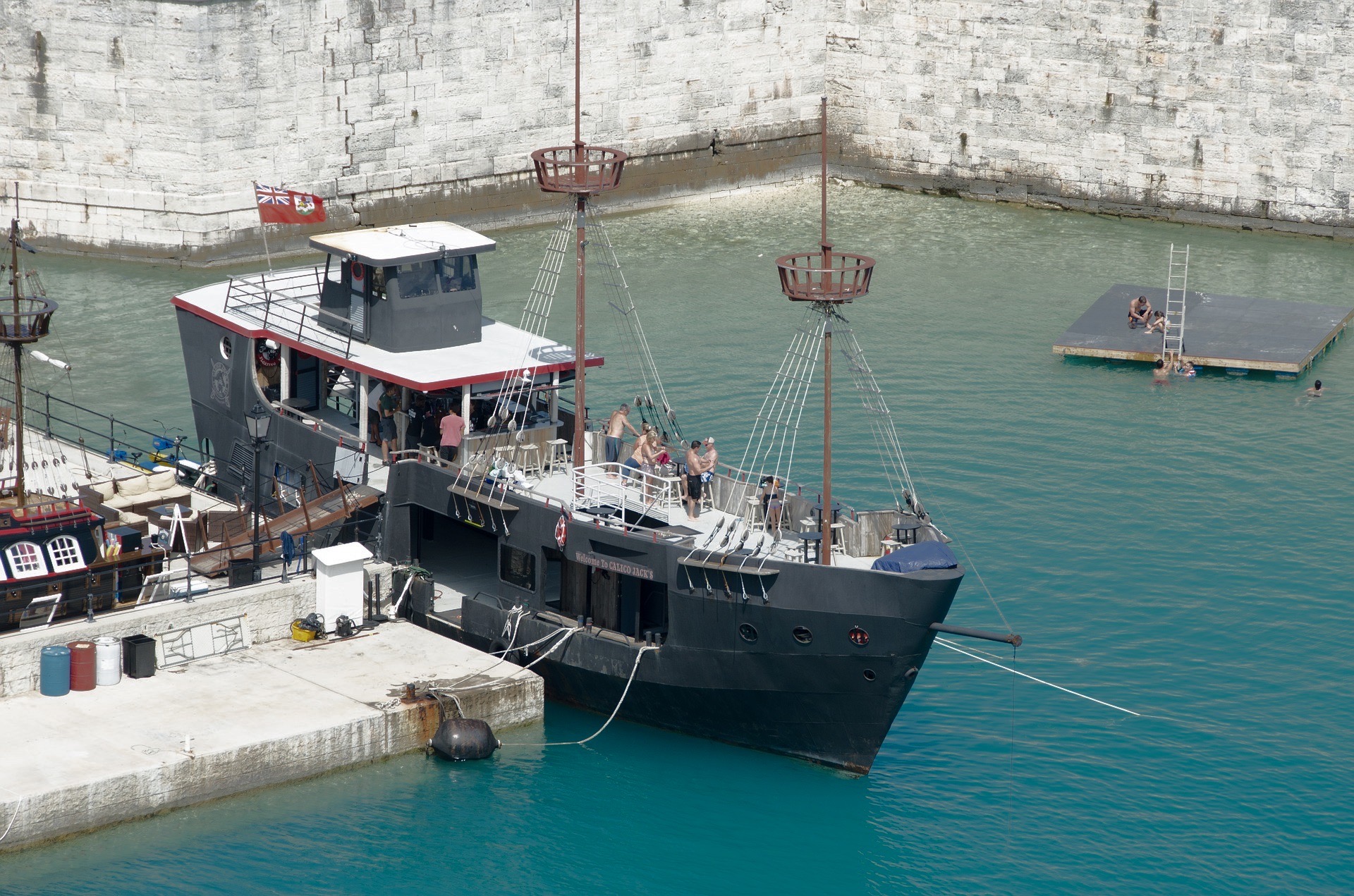
The Royal Naval Dockyard
The Royal Naval Dockyard in Bermuda houses a significant cruise ship port as well as a variety of attractions like shopping, dining, craft studios, and entertainment, all housed in 18th-century naval structures. The Dockyard is also home to the National Bermuda Museum, which is housed within the fort’s body. Visitors may also go to adjacent Snorkel Park Beach, which has a white sandy beach, a restaurant and bar, and water sports.
Crystal and Fantasy Caves
Bermuda’s Crystal and Fantasy Caves are among the most famous tourist attractions. Visitors may walk on floating pontoons viewing the subterranean pools’ crystal-clear, blue waters. The caves are thought to have formed during the Pleistocene Ice Age 1.6 million years ago. Take in the spectacular rock formations of the soaring stalagmites rising from deep within the lake and limestone icicles falling from the ceiling like frozen waterfalls as you make your way into the caves.
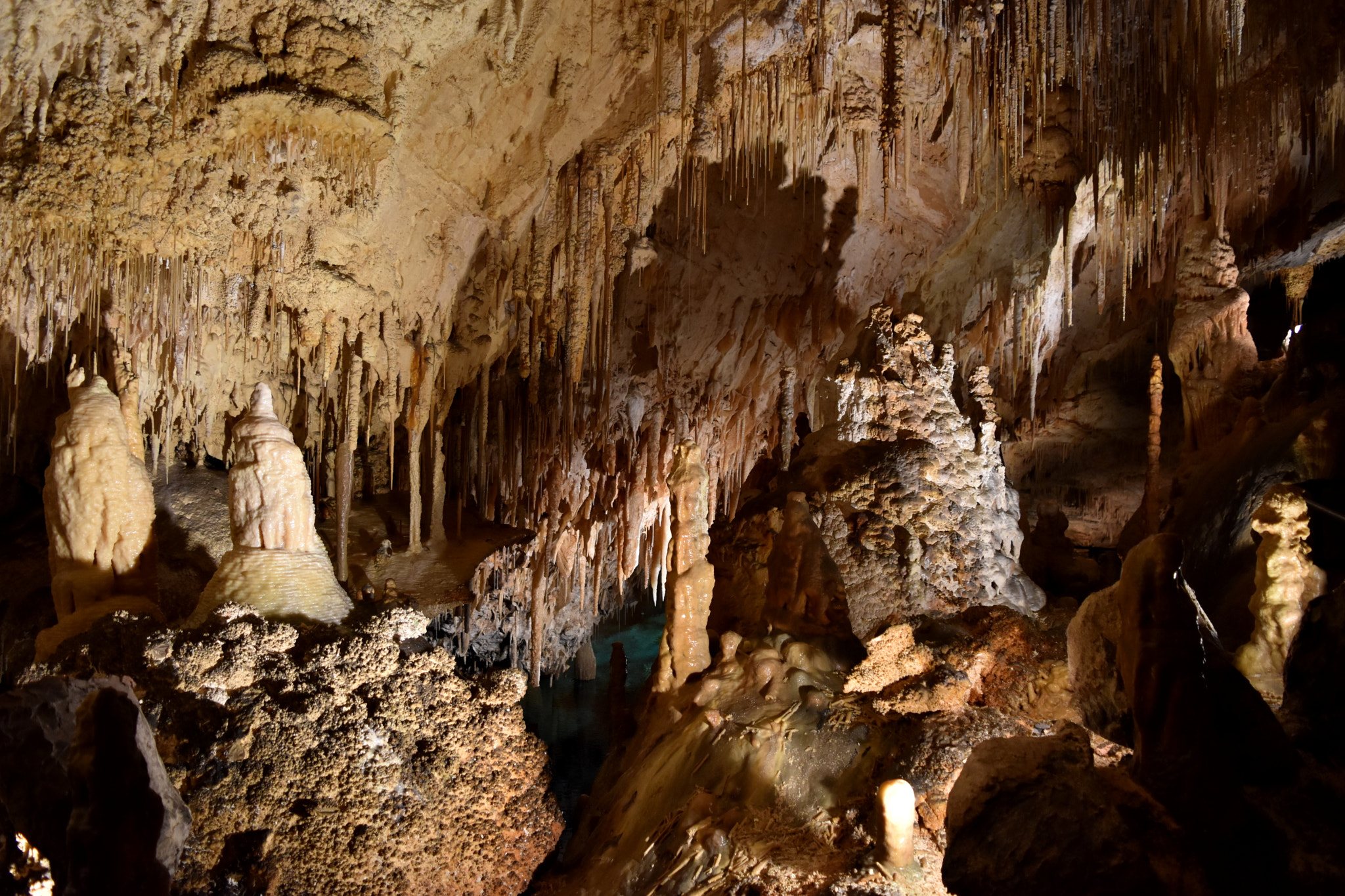

St. Peter’s Church
Bermuda’s St. Peter’s Church was erected in 1612 and is the oldest Anglican church in continuous use in the Western Hemisphere. Part of the St. George UNESCO World Heritage Site, an 18th-century throne recovered from a shipwreck as well as communion silver dating from the 1600s are on display. The western addition of the church is currently a station on the African Diaspora Past Trail, which retraces Bermudians of African ancestry’s rich heritage and culture.
St. George’s Island forts
Bermuda was fortified with a succession of forts, particularly in St. George. The spectacular, fully restored Fort St. Catherine includes a collection of dioramas portraying Bermuda’s rich history. Alexandra Battery, which dates from 1840, is located nearby and overlooks Building Bay Beach, famed for its brilliant sea glass.

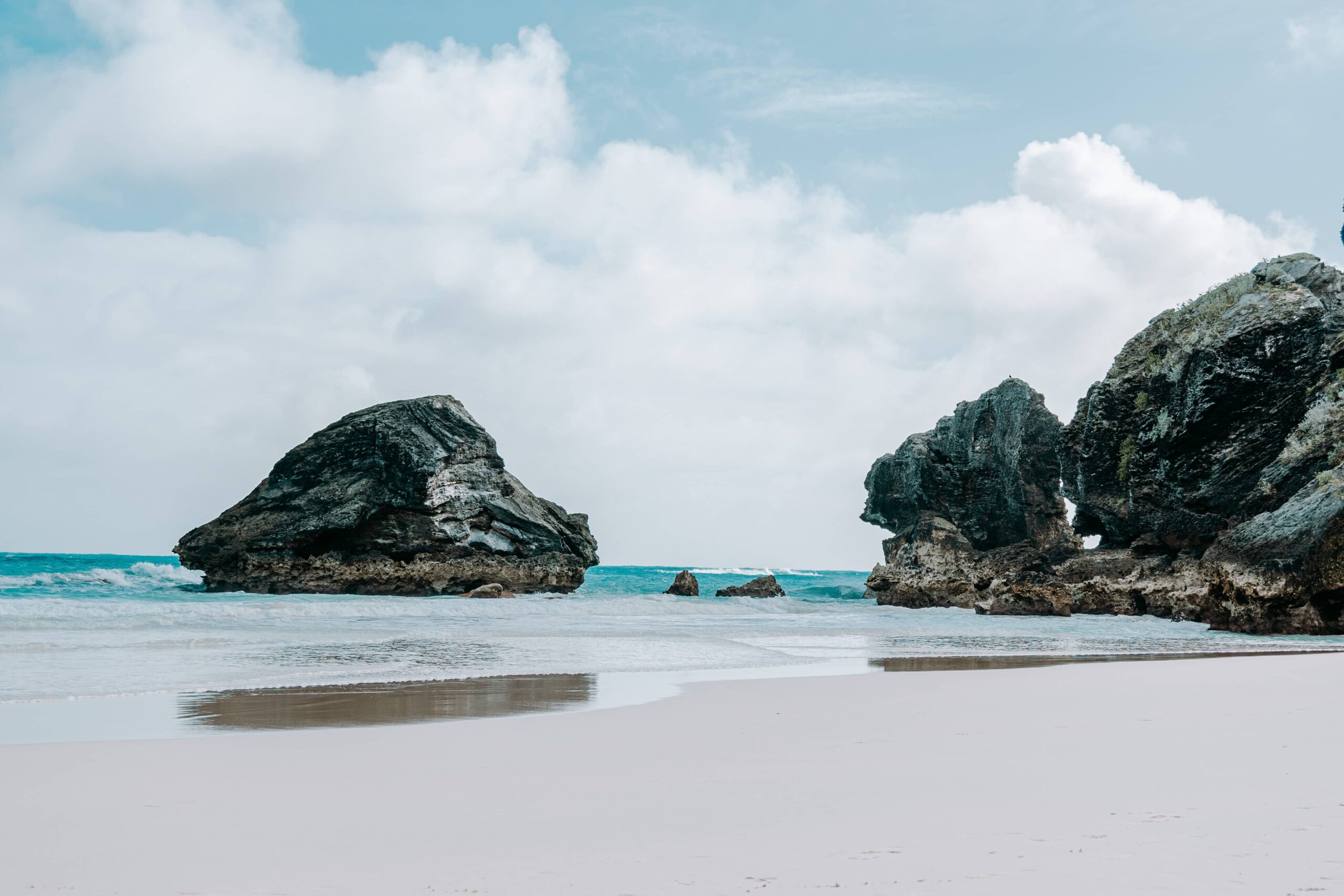
Horseshoe Bay Beach
Southampton Parish on Bermuda’s South Shore is one of the world’s best beaches. Horseshoe Bay Beach is a crescent-shaped blush-pink sand beach surrounded by beautiful rock formations. During the peak season, from May to September, lifeguards patrol the beach. Beach walkways connect Chaplins Bay, Stonehole Bay, and other adjacent beaches. Change rooms and equipment rentals are available along the coastline.
5-day Itinerary in Bermuda (with extension options)
Day 1
Arrive at Southampton
You’ve finally arrived in Bermuda, and the first thing you want to see is… the beach, of course! Bermuda is well-known for its turquoise seas and strangely pink beaches. The only issue is that during the summer, some of Bermuda’s nicest beaches can get overcrowded. If you wish to avoid the swarms of sun-kissed Americans, have no fear: there is plenty of beach to go around.
Among the things to do in Bermuda for the ultimate beach day starts with a stroll along Horseshoe Bay. When you have had your fill of the different shades of blues and sun kissed enough go on a picnic to Jobson’s Cove.
Head to Warwick Long Bay which is a great place to unwind then from Gibb’s Hill Lighthouse, you can see the entire island with one of the best views you’ll witness.


- Backpacker:
- Budget:
- Mid-range:
- High end:
This section will be added shortly.
From the Airport to your accommodation
By Train
By Bus
By Metro
Day 2
A Trip in the Old Days
To enjoy the entire experience of this unusual tiny archipelago, make time to visit its still-existing original settlement, St. George’s. This little village is renowned as the Western Hemisphere’s oldest continually populated community. St. George is a must-see for all visitors because of its history, churches, cobblestoned streets, and charming cottages.
Activities to do in St. George, Bermuda includes going to the town plaza, where you can watch a historical reenactment of the area’s past.
You can also then Visit art galleries and museums in the area. When you’re done have lunch at the famous White Horse Tavern.
After lunch, walk up to the incomplete church. Afterward, head to Fort St. Catherine’s and Tobacco Bay.
If you are lodging elsewhere on the island, the best method to get here is via ferry. Take the swift boat from Hamilton in the morning and you’ll arrive right in the heart of town, in King’s Square, in time for the famed historical reenactment that happens every day at noon. Curve your way through narrow alleyways and past UNESCO world heritage sites like St. Peter’s Church, the oldest in the Western hemisphere. It’s preferable to get lost on these routes on your own. You never know what you might find.

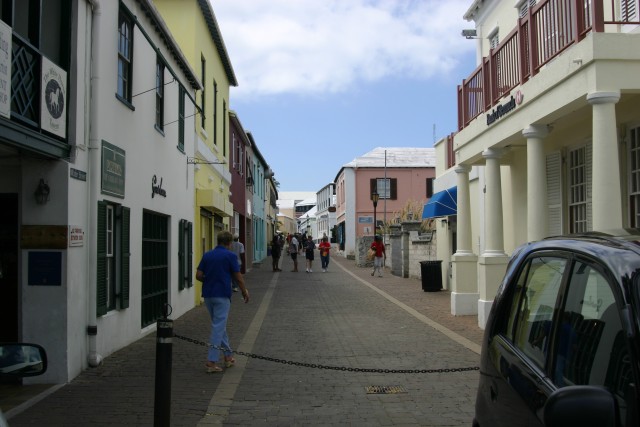

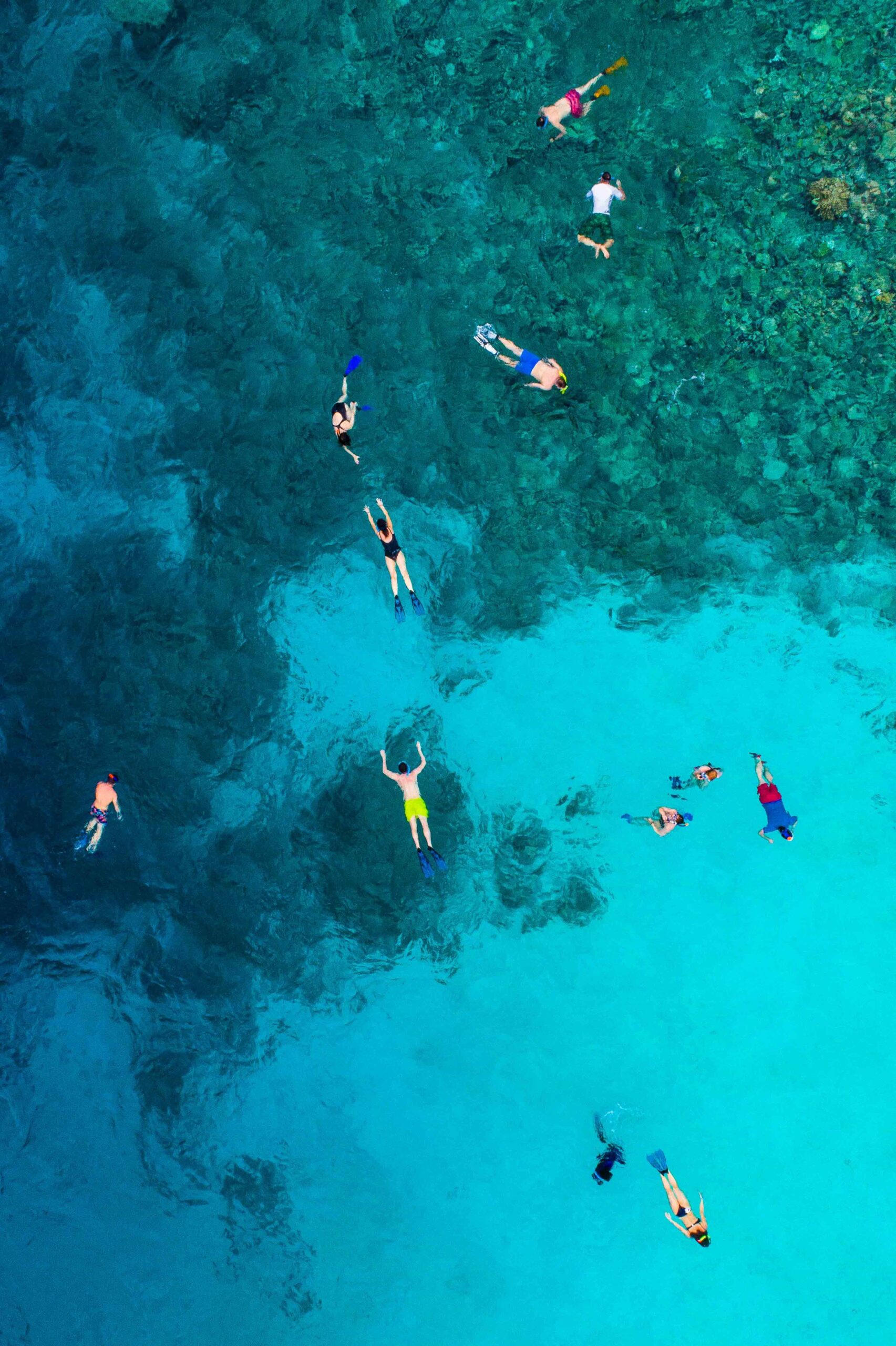
Day 3
Adventure Time
You cannot visit Bermuda without participating on a snorkeling or scuba diving tour. Bermuda’s sophisticated reef system has not only kept its borders from washing away for thousands of years, but it has also captured numerous ships—between 250 and 400, to be exact—in its chops. This results in some absolutely spectacular snorkeling and scuba diving experiences.
Snorkeling trips are available through many providers, which most depart from the Hamilton Princess marina at 10 a.m. or the Fairmont Southampton pier at 10:15 a.m. The snorkel trip visits two separate locations: a shipwreck and a world-famous coral reef. Price: $89 per person for 2.5 – 3 hours.

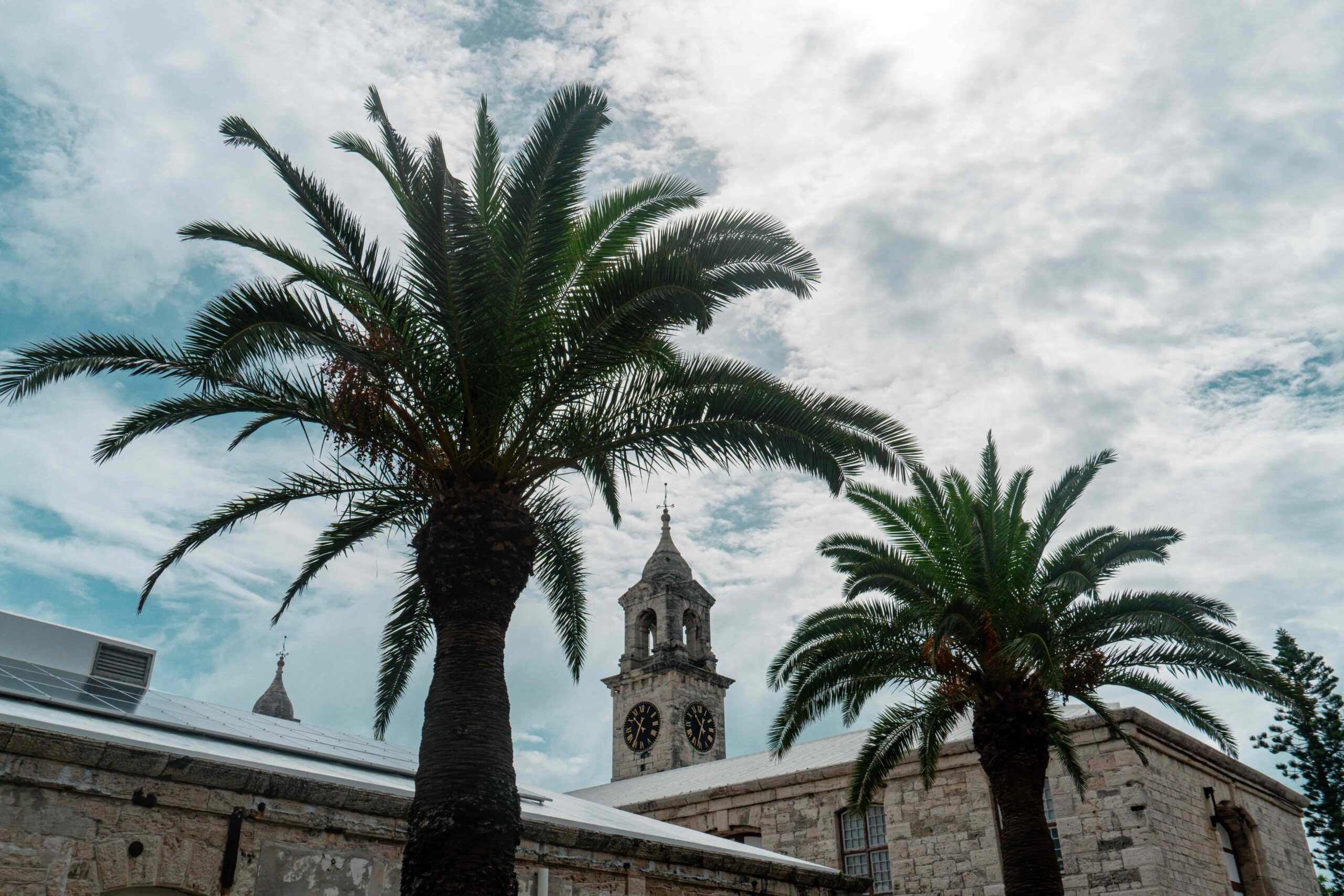
After you’ve been safely brought to land, take the bus or the boat to Dockyard. If you’re taking the bus, request that the driver drop you off at Sea Glass Beach. This secluded nook is well-known on the island for being covered in – you guessed it – sea glass. It’s ideal for little keepsakes, but it’s notoriously difficult to locate. Fortunately, Bermudians are quite nice and will even accompany you to the beach if you can’t find it.
Once you’ve collected all the sea glass you can carry, walk or take the bus to Dockyard. This ancient coastal hamlet serves as a hub for sightseeing, shopping, eating, entertainment, and a variety of other exciting activities. We recommend going by the Clocktower Mall to buy souvenirs and ice cream from Haagen Dasz. From there, visit sights like Bermuda Glassblowers, where you can see artists create beautiful artworks in real-time.
You can end the day however you want. Maybe stroll around and find a place to dine, then head back to your accommodation to prepare for your next day.
Day 4
Boat around Cambridge Beaches
Once you’re on the western side of the island, we recommend Somerset Bridge Watersports for boat rentals. This is best reached by bus or personal transportation. Prices start at $100 for 2 hours and up to $280 for 8 hours.
Make it your goal to see the caverns that encircle Cambridge Beaches Resort now that you have your own boat to explore the island with. This is one of the island’s calmest, purest sections of water, and there are lots of little beaches to call your own for the day. Keep an eye out for turtles; this region has a thriving sea turtle population.
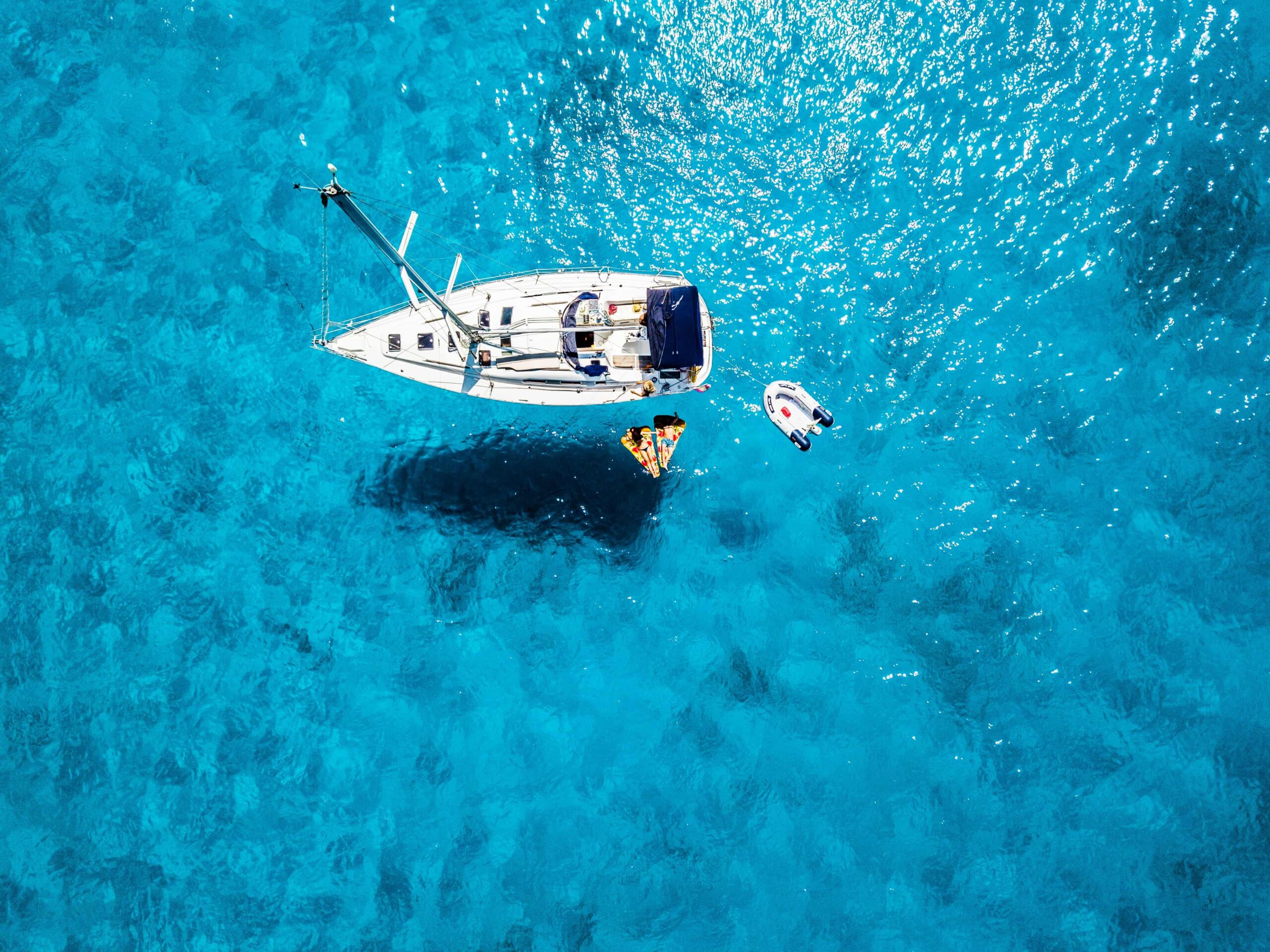

Lunch at Breezes restaurant is one of the nicest things to do in Bermuda if you have your own a boat. This restaurant is located on the backside of the Cambridge Beaches resort, in a large bay that is frequently crowded with residents in their boats, laughing and enjoying the quiet, blue seas. When you become hungry, simply stroll up to the restaurant from the lake and you’ll be seated right away. If you’d rather go out to supper, make a reservation and return after you’ve returned your boat. It’s a fantastic place to view the sunset since you can practically see the sun sink into the water while sipping your chilled drinks.
When you’re ready to return to the water, head west into the open ocean to visit the Vixen, Bermuda’s sole out-of-water ship disaster. This boat is now a fish sanctuary, although it was initially sunk to safeguard Dockyard from any potential military attacks during the Revolutionary War.
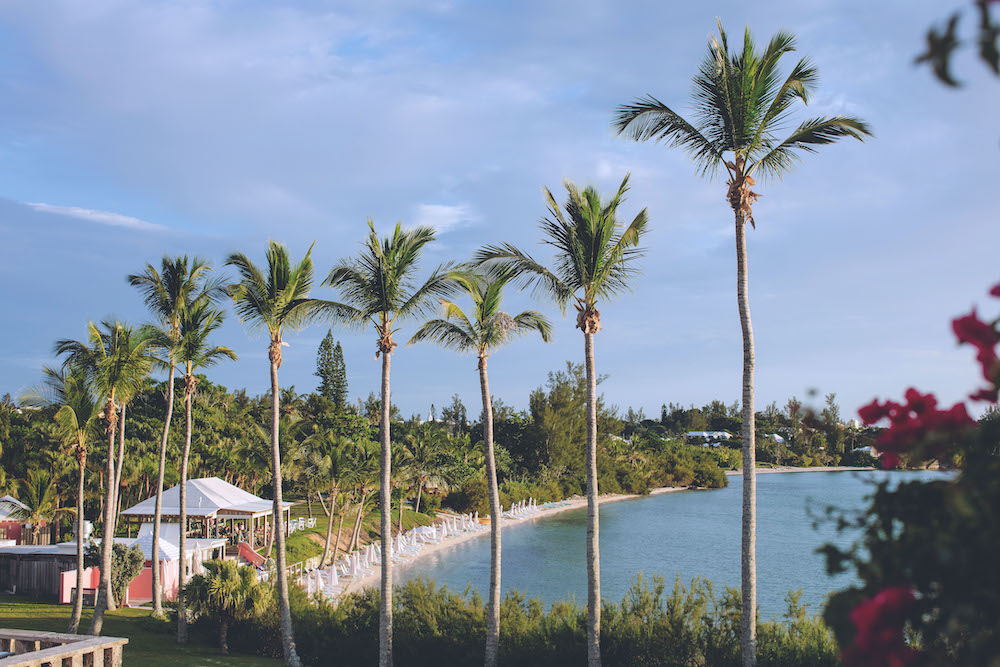
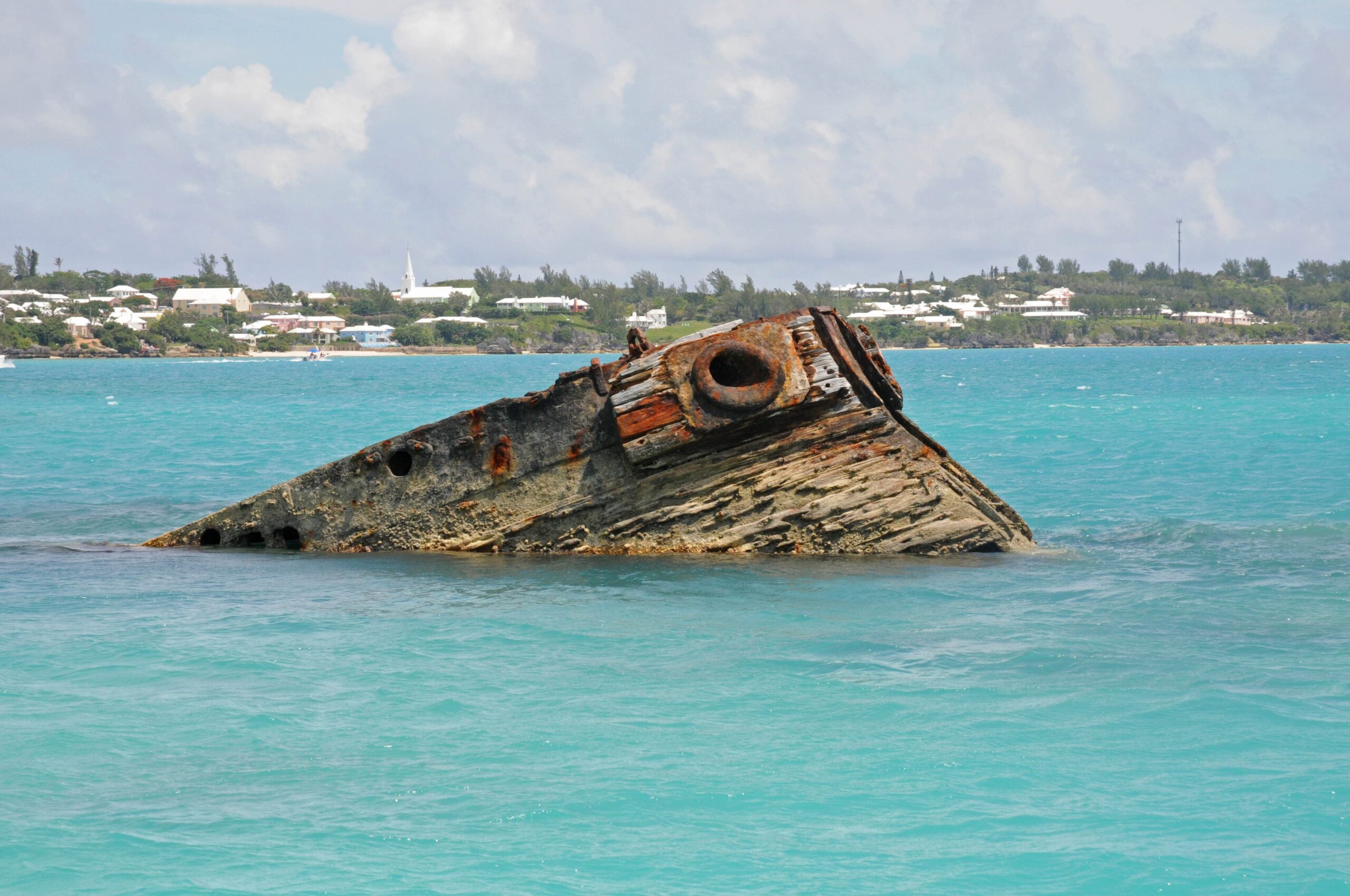


Days 5
A Day off the Beaches
You’ll be tired of beaches and blazing heat by day five, so why not spend the day in Bermuda’s sole city? Shop for souvenirs, visit local shops, enjoy a cup of tea, or simply drink and relax at one of the numerous pubs and restaurants on Front Street. Hamilton is conveniently accessible by all modes of transportation and provides all you need for amusement. Stop by Bermuda’s tourism hub and bar on Front Street for some more amazing activity ideas and reasonably priced beverages.
Bird Cage is a new restaurant with spectacular views of Hamilton Harbor. Drinks are moderately cheap, and the atmosphere is always upbeat. They are open 4PM to 10PM and have gone cashless.

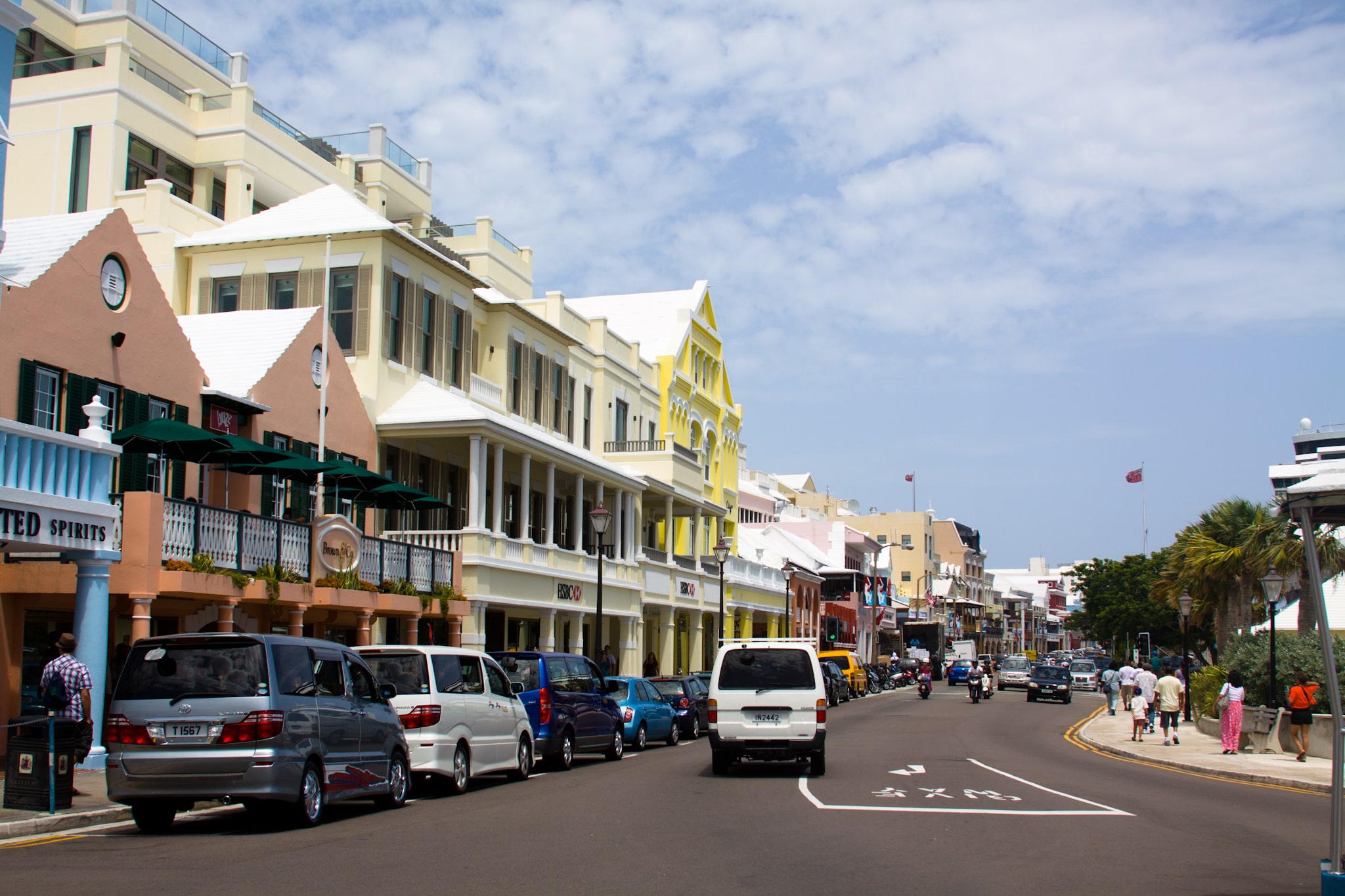


Spend nights at the harbor. On Wednesdays during the summer, Front Street is closed to traffic and transformed into a massive street party known as Harbor Nights. If your journey overlaps with this, we strongly recommend going; it’s a peek behind the curtain of Bermuda’s lively culture and community. While eating warm doughnuts and watching Bermuda gombeys dance on the street, enjoy a flight of Bermuda rum.
Gombeys are an important part of Bermudian culture: while slave owners still existed, slaves were not allowed to dance unless they were commanded to do so in these costumes for the enjoyment of their masters. It gradually became more about rebelling than following orders, and today the custom serves as a reminder and celebration of Bermuda’s black population’s power.
Take a stroll along Front Street until you reach Pitts Bay Road and see a sign advertising the Rosedon Hotel. To arrive in time for tea, go up the hill to the front porch shortly before 4 p.m. Rosedon has been in business since 1901 and has been providing tea for nearly as long. Rosedon’s new restaurant and gardens, on the other hand, have lately pulled it into the current day, so anticipate modern flavor with a traditional touch.
Finish the evening at Hamilton Princess’ luxurious over-water bar, 1609, right across the street. While the beverages are pricey, the vistas and coastal breeze make this a must-do experience.
You may now either end your Bermuda holiday and return home or extend it by a few days. Continue reading if you wish to include additional days.
Day 6
On an Adventure
You’re almost at the finish of your journey! It’s the ideal time to go big. Get crazy on a jetski, drive the entire island in a day, or just put your feet up and relax on a luxury Catamaran tour.
There are a lot of Watersports and jetski offices including snorkeling programs that are ideal for adrenaline seekers desiring a remarkable adventure. It’s a little pricey, but it’s well worth it. You’ll spend two hours navigating around coral reef formations before diving into them, feeding fish at the shipwreck-turned-nature reserve The Vixen, and mooring and swimming at the famed Pompano Beach beach bar. Discover the finest of Bermuda in the most enjoyable way imaginable. Furthermore, if you do not have your own vehicle and take the boat into Dockyard, many tours operators will pay for your cab ride to their site depending on what program you signed up for of course.

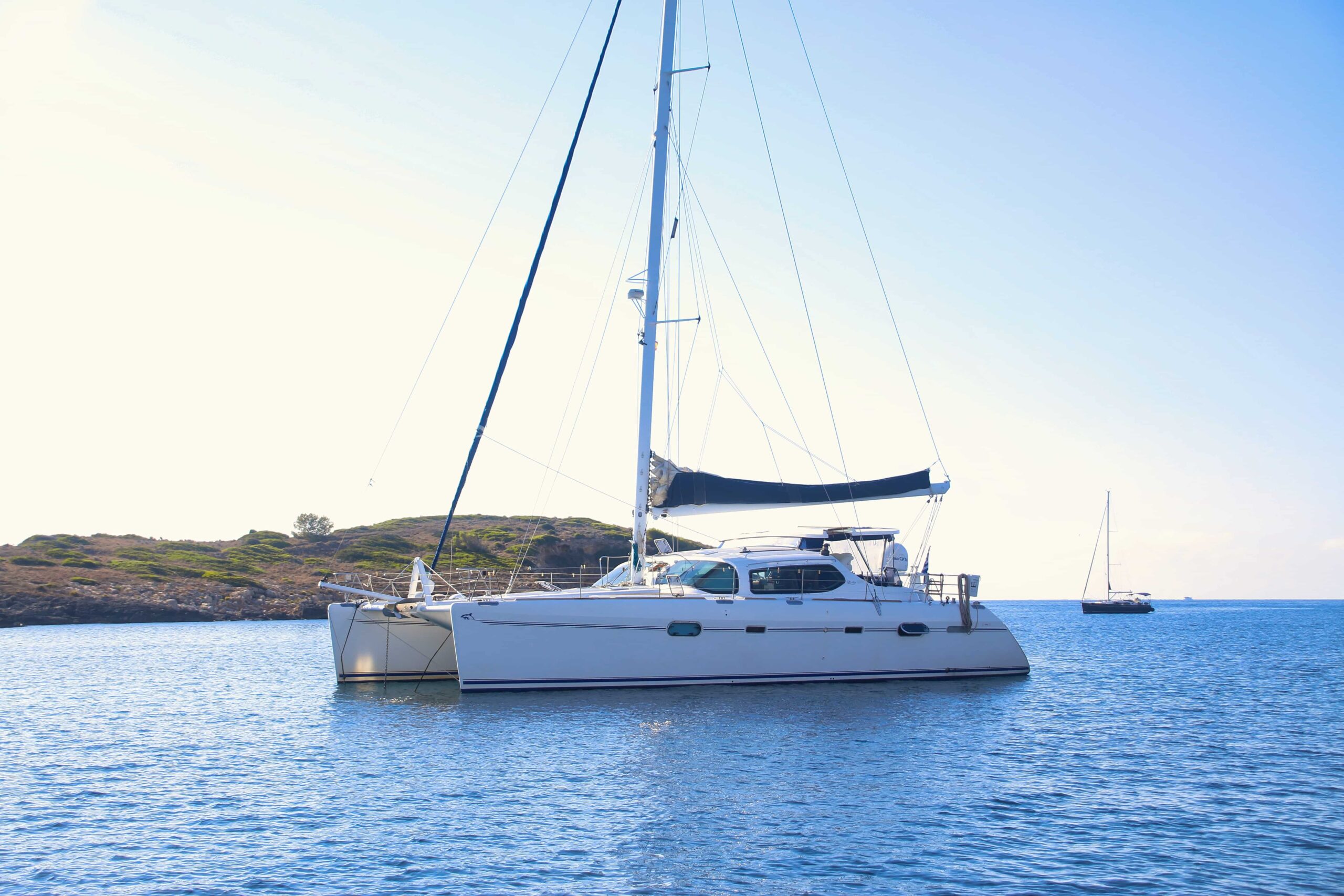
Twizys are two-person electric vehicles. They are better for the environment and safer than mopeds, but they are also a lot of fun to operate and maneuver. One of the most affordable modes of transportation if you just have a few days and want to see as much as possible. If you rent one, you should stop by Admiralty House, made up of jagged cliffs that have become well-known around Bermuda for their adrenaline-inducing abilities with beautiful vistas.
Alternatively, get on a Catamaran and explore Bermuda. If you just have a short stay in Bermuda, this is one of the finest ways to make the most of it. Many catamaran operators will handle everything for you, from meals and beverages to all the water sports and activities you could want. Simply meet the cruise at the Dockyard pier at your preferred hour. They’ll drop you off in Dockyard, where you can take the boat back into Hamilton for drinks or stay in the neighborhood and try out one of the more local pubs.
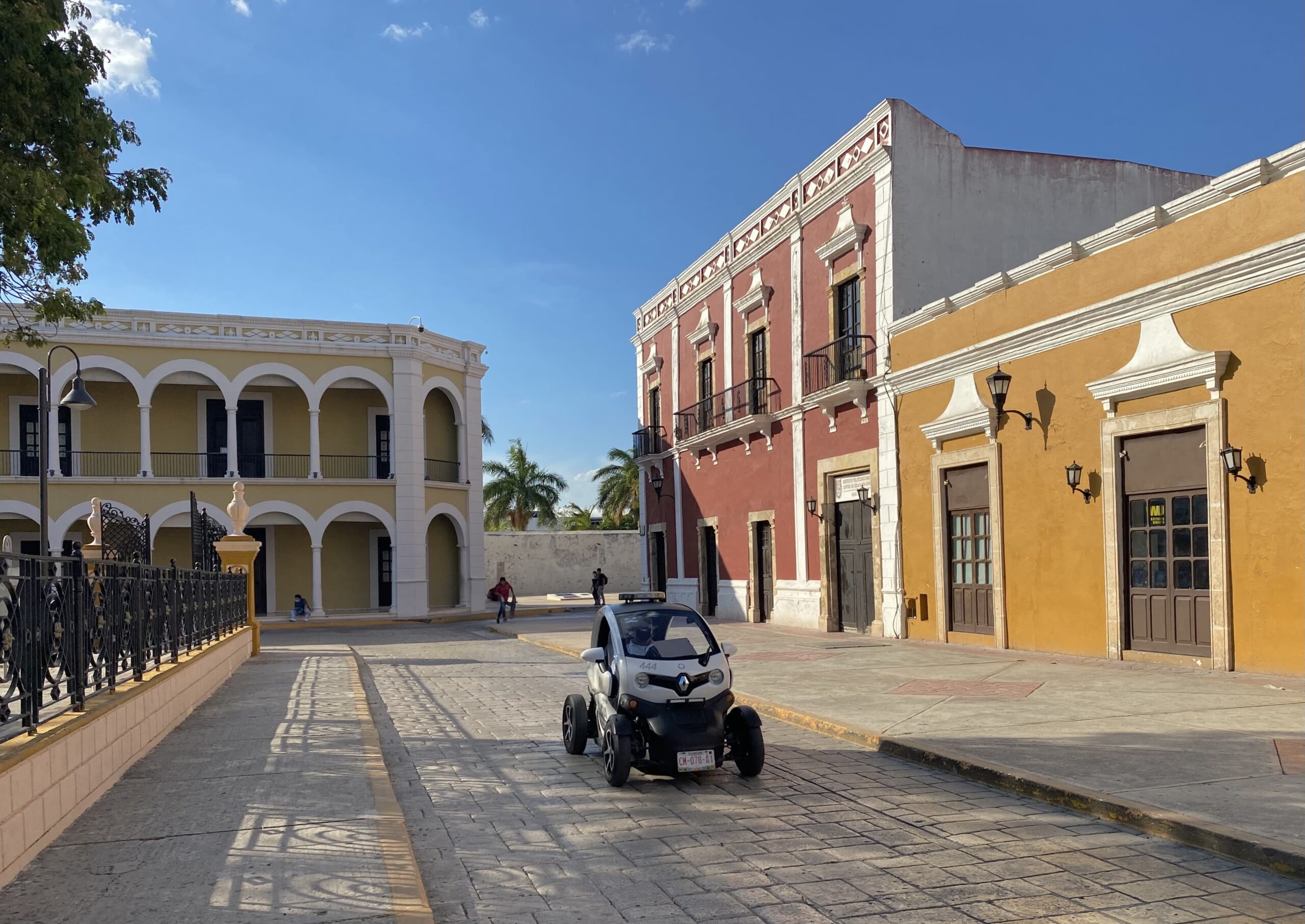


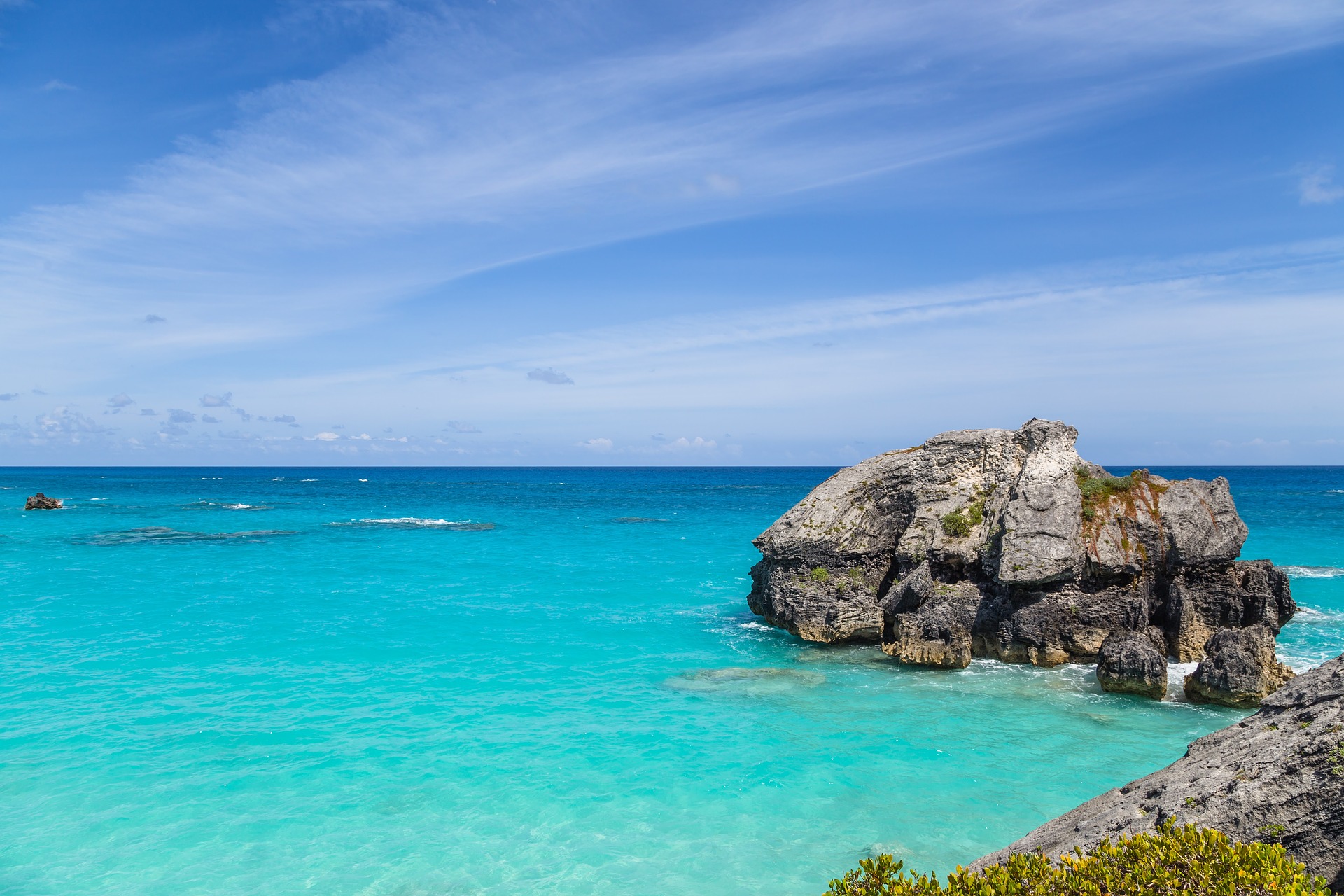
Day 7
Ending it on a High Note
Bermuda has so much to offer, and this itinerary just scratches the surface. If you stick to this plan, you’ll see everything that makes this island unique, although there are lots of other things to do that we didn’t mention.
Cooper’s Island is one of Bermuda’s lesser-known yet most magnificent natural wonders. Cooper’s was a restricted base for the US military and, later, NASA until 1995. Today, you may roam among its natural beauty in perfect seclusion; during less touristic months of the year, you may find yourself the only person on Cooper’s Island at all. We recommend packing a lunch and a good book or two to last you the full day.
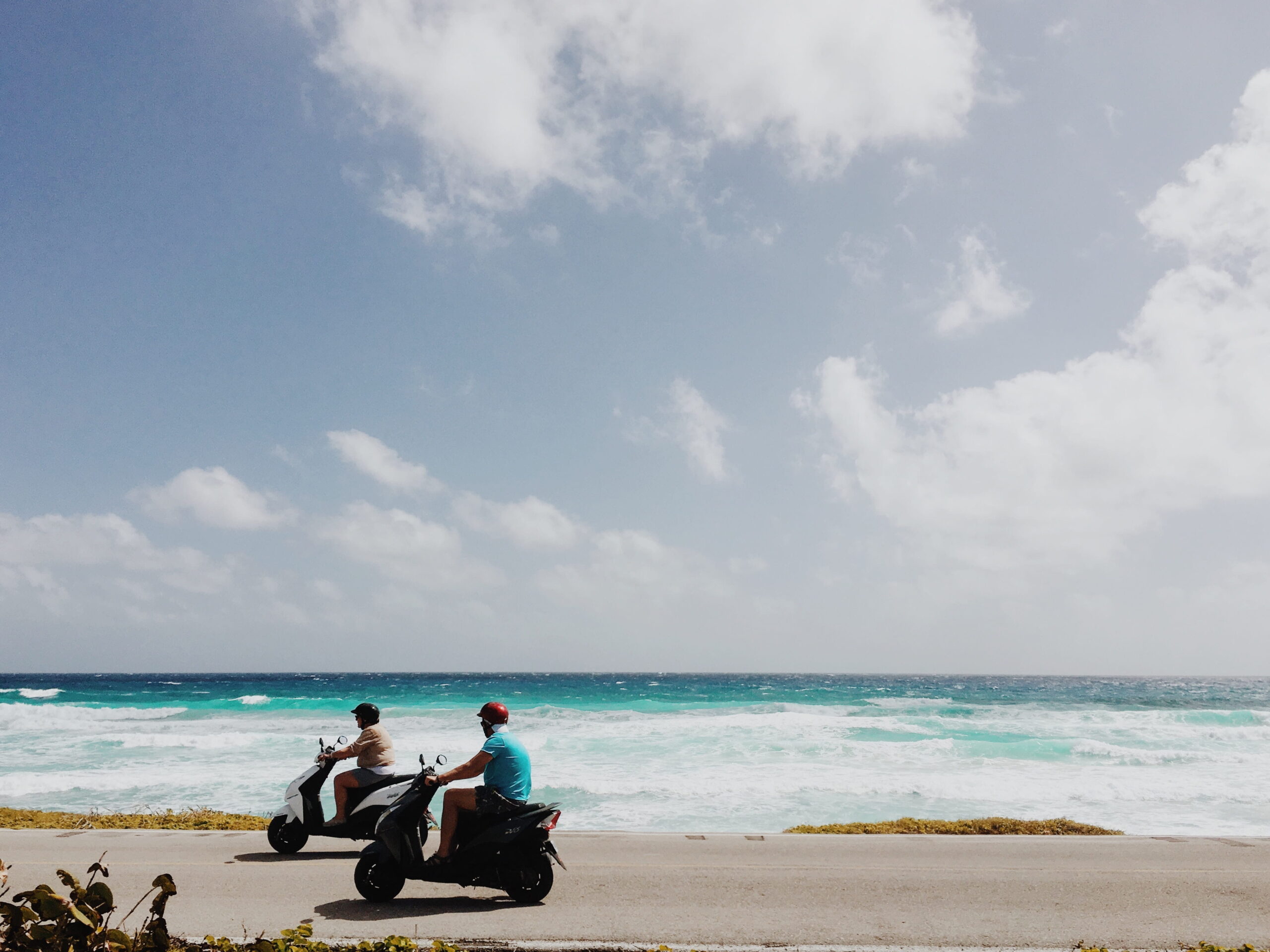

Without your own vehicle, Cooper’s Island is difficult to access. It is absolutely remote, and you will be unable to acquire a cab or bus once there. This is best done on a day when you have access to your own vehicle, be it a vespa, a private car, or a boat.
If you’re still feeling adventurous, head west from Cooper’s Island toward Hamilton to return to civilization. Swizzle Inn and Crystal Caves, two of Bermuda’s most popular attractions, are only over the bridge.
We recommend starting with Crystal Caves. Two adolescents discovered this unusual location by chance. These secret caverns are home to exquisite million-year-old formations known as stalactites and stalagmites, which take thousands of years to produce and resemble crystal icicles. The walkthrough is an absolutely otherworldly experience. The Crystal Caves are open daily from 9 a.m. to 5 p.m. Price: $22 per person.

Then head to the zoo. The Aquarium and Zoo are easily accessible by bus or personal transportation. Bermuda’s only zoo features two open-air exhibits with free-roaming monkeys, birds, and reptiles. The zoo is well worth a visit. Finish the day by walking across the harbor to Flatt’s Village, where you can get fresh meals like poke bowls or flatbreads from the restaurant village Pantry. Bermuda Aquarium and Zoo Prices: $10 per adult $5 per child
Day 8
Departure Day
If you still have time early in the morning, head for your last breakfast on the island. After a great trip following this Bermuda itinerary, you can start bidding this wonderful island country farewell, if you haven’t caught a flight the day before at night.
That said, get your things ready early in the morning and head to the streets to be able to reach the airport in time for your departure out of Bermuda.
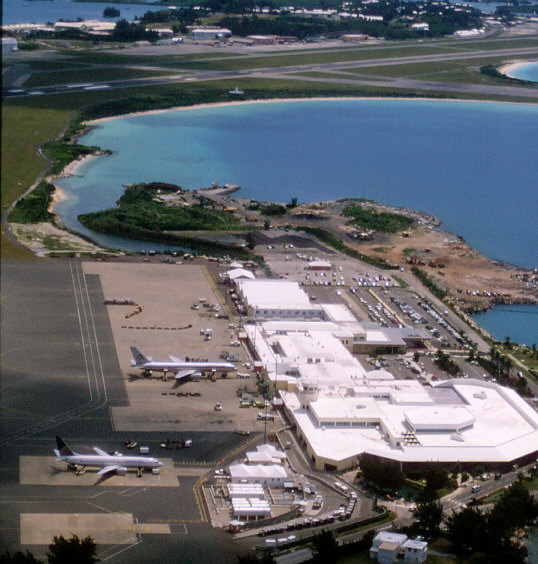
The Most Popular Food in Bermuda
Bermuda cuisine makes use of the readily available fish. Boiled rice or black-eyed peas are common side dishes. Chowder is a popular dish among both residents and visitors. If you wish to feel the British influence, there are a few British pubs around. Restaurants near the cruise ship docks are usually the most costly, so if you want to save some money, go a little further away.
The culinary culture in this nation is as diverse as it is outstanding, so it’s no wonder that people are proud of their country’s cuisine and drink. The mainstay of Bermudian cuisine is, of course, seafood.
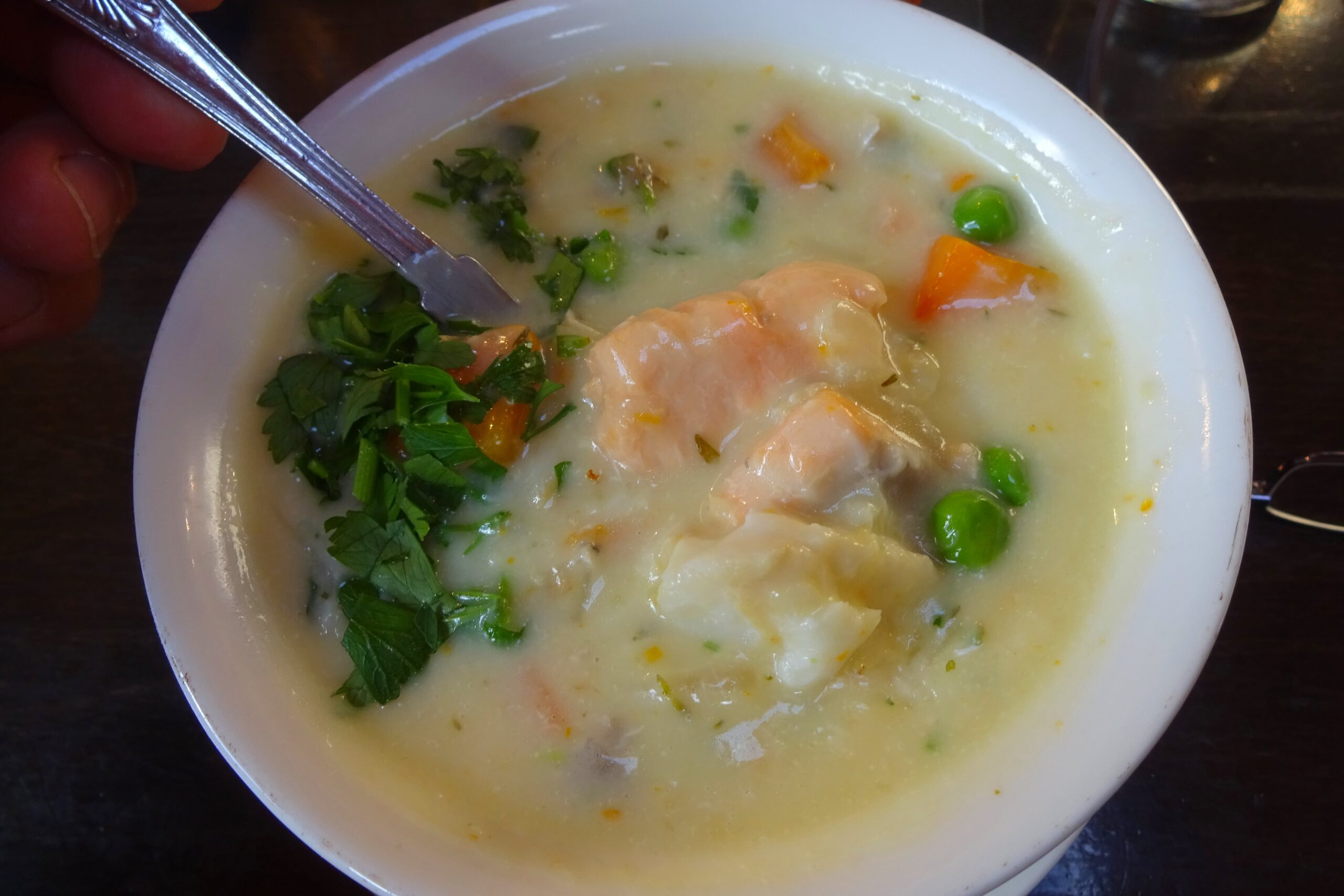
Chowder of Fish
If there’s a meal that defines Bermuda, it’s this — a fragrant combination of fish and spice that frequently includes potatoes, tomatoes, onions, carrots, green peppers, and celery. You could call it Bermudian gumbo. Every recipe is somewhat different, but they always use the island’s own Outerbridge’s Original Sherry Peppers and black seal rum, which give the chowder its characteristic flavor and heat.
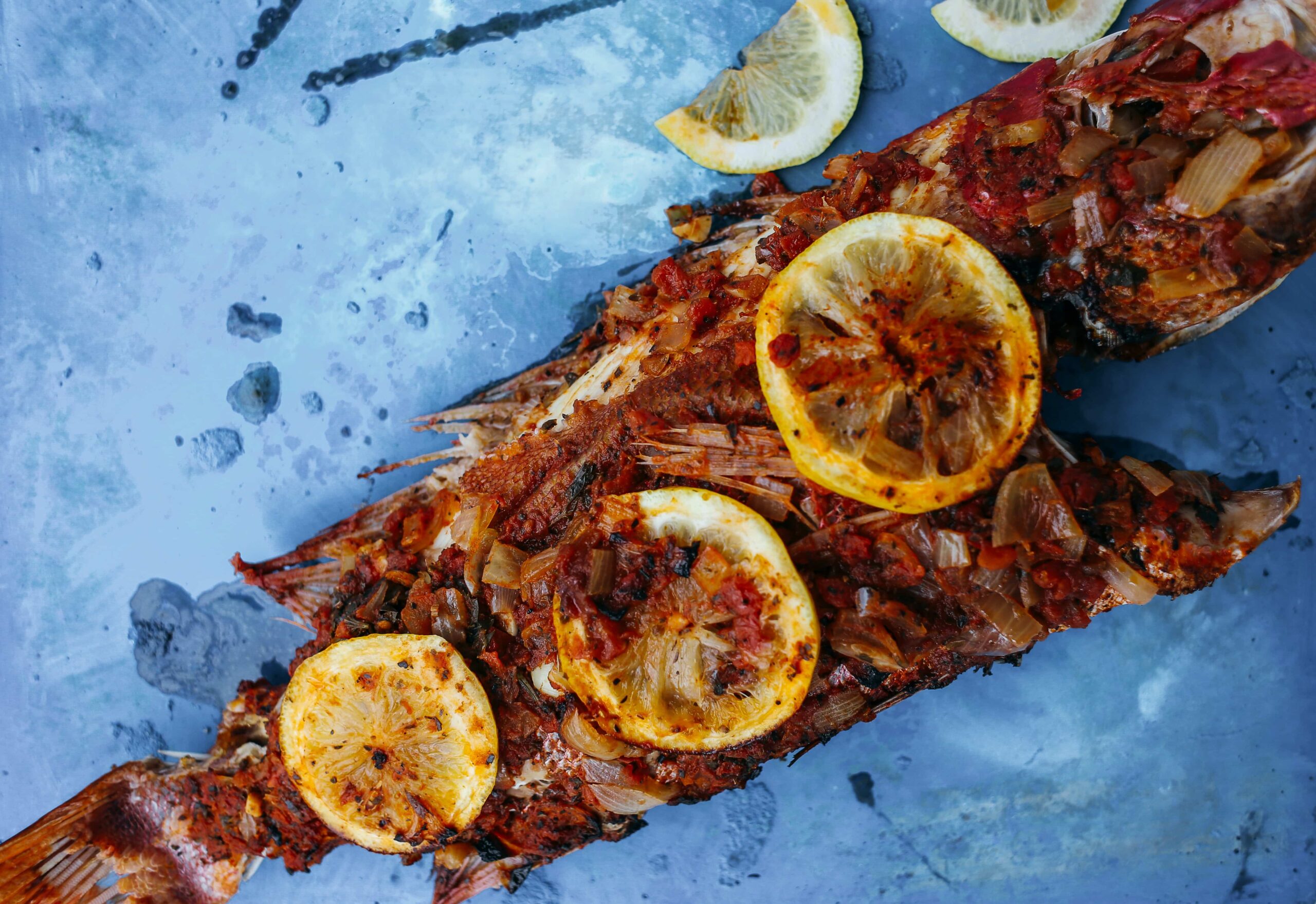
Glasseye Snapper
The glasseye (also known as the catalufa) is a member of the bigeye family of fishes that may be found in tropical oceans all around the world. Divers like seeing colorful glasseyes on Bermuda’s reefs, and diners enjoy the fish’s buttery smooth flavor.

Lobster with Spices
From September to March, you can find spiny lobsters at practically every restaurant on the island, including Lobster Pot, Wahoo’s, and Blû, as well as grocery shops. Because this delicacy is smaller than its Maine cousin and lacks claws, the majority of the soft, flavorful flesh is located in the tail. Bermuda chefs frequently include spiny lobster into chowder, tacos, and pasta sauces, but it’s just as good with a coating of butter.

Codfish Breakfast
On Sunday mornings, people gather for a substantial codfish meal, which consists of a heaping plate of boiling or steamed salt cod with boiled potatoes, onions, sliced bananas, a hard-boiled egg, and, occasionally, avocado slices. It comes with a tomato or butter onion sauce on top. Bouchée, Paraquet, and Speciality Inn are all terrific places to try this popular brunch.
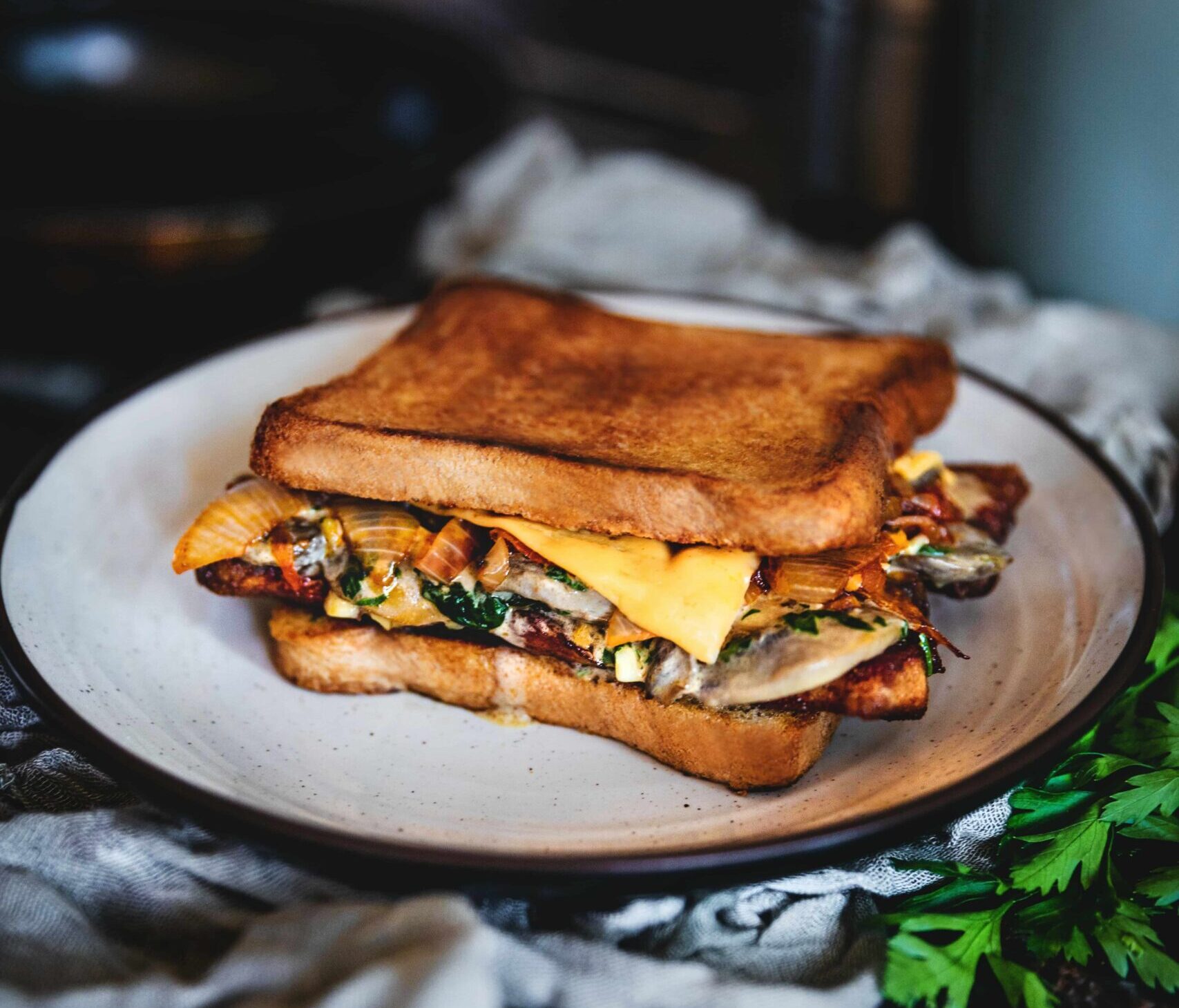
Fish Sandwich
The fish sandwich is a menu mainstay in Bermuda, from no-frills eateries to fine dining bistros. The fundamental recipe is typically the same across the island: deep-fried fish fillets with tartar sauce layered over raisin bread or whole-wheat toast. Choose the “works” option, which includes lettuce, tomato, grilled Bermuda onions, cheese, spicy sauce, and coleslaw. Art Mel’s Spicy Dicy is a hidden gem noted for serving one of Bermuda’s greatest fish sandwiches (and some say, the world).
What's the Travel Budget for Bermuda?
Flights
- Flights start at roughly $370 from nearby countries. Tickets however on average cost around $700 and can cost way more depending on which class and from which country you depart from.
Accommodation
- Nomad Backpacking style travelers can expect to spend around $370 for a week
- Budget travelers can expect to spend around $720 for a week
- Mid-range travelers can expect to spend around $1650 for a week
- Luxury travelers can expect to spend around $3300 for a week
Food Budget (Three meals and drinks)
- Nomad Backpacking style travelers can expect to spend around $25 per person per day
- Budget travelers can expect to pay around $35 per person per day
- Mid-range travelers on average would cost $40 to $60 per person per day
- Luxury travelers can expect to pay around $90 to $125 per person per day
Overall Budget Styles (Not including Flights, Tours, Transportation, or Car Rental)
- Nomad Backpacking style travelers can expect to spend roughly $550 for a week
- Budget travelers can expect to spend close to $1000 for one person for a week
- Mid-range travelers can expect to spend approximately $2100 for one person for a week
- Luxury travelers can expect to spend around $4250 for one person for a week
Flights
- Flights start at roughly $350 from nearby countries. Tickets however on average cost around $700 and can cost more depending on which class and from which country you depart from.
Accommodation
- Nomad Backpacking style travelers can expect to spend around $200 for a week
- Budget travelers can expect to spend around $350 for a week
- Mid-range travelers can expect to spend around $600 for a week
- Luxury travelers can expect to spend around $1050 for a week
Food Budget (Three meals and drinks)
- Nomad Backpacking style travelers can expect to spend around $13 per person per day
- Budget travelers can expect to pay around $25 per person per day
- Mid-range travelers on average would cost $30 to $40 per person per day
- Luxury travelers can expect to pay around $60 to $100 per person per day
Overall Budget Styles (Not including Flights, Tours, Transportation, or Car Rental)
- Nomad Backpacking style travelers can expect to spend roughly $330 for a week
- Budget travelers can expect to spend close to $650 for one person for a week
- Mid-range travelers can expect to spend approximately $950 for one person for a week
- Luxury travelers can expect to spend around $2100 for one person for a week
Flights
- Flights start at roughly $350 from nearby countries. Tickets however on average cost around $700 and can cost more depending on which class and from which country you depart from.
Accommodation
- Nomad Backpacking style travelers can expect to spend around $200 for a week
- Budget travelers can expect to spend around $350 for a week
- Mid-range travelers can expect to spend around $600 for a week
- Luxury travelers can expect to spend around $1050 for a week
Food Budget (Three meals and drinks)
- Nomad Backpacking style travelers can expect to spend around $13 per person per day
- Budget travelers can expect to pay around $25 per person per day
- Mid-range travelers on average would cost $30 to $40 per person per day
- Luxury travelers can expect to pay around $60 to $100 per person per day
Overall Budget Styles (Not including Flights, Tours, Transportation, or Car Rental)
- Nomad Backpacking style travelers can expect to spend roughly $330 for a week
- Budget travelers can expect to spend close to $650 for one person for a week
- Mid-range travelers can expect to spend approximately $950 for one person for a week
- Luxury travelers can expect to spend around $2100 for one person for a week
Flights
- Flights start at roughly $350 from nearby countries. Tickets however on average cost around $700 and can cost more depending on which class and from which country you depart from.
Accommodation
- Nomad Backpacking style travelers can expect to spend around $200 for a week
- Budget travelers can expect to spend around $350 for a week
- Mid-range travelers can expect to spend around $600 for a week
- Luxury travelers can expect to spend around $1050 for a week
Food Budget (Three meals and drinks)
- Nomad Backpacking style travelers can expect to spend around $13 per person per day
- Budget travelers can expect to pay around $25 per person per day
- Mid-range travelers on average would cost $30 to $40 per person per day
- Luxury travelers can expect to pay around $60 to $100 per person per day
Overall Budget Styles (Not including Flights, Tours, Transportation, or Car Rental)
- Nomad Backpacking style travelers can expect to spend roughly $330 for a week
- Budget travelers can expect to spend close to $650 for one person for a week
- Mid-range travelers can expect to spend approximately $950 for one person for a week
- Luxury travelers can expect to spend around $2100 for one person for a week
If you want to know what to pack, read this list below:
- This is a casual island country that can get extremely hot, dress accordingly
- Raincoat or Light Waterproof Jacket
- Hiking Boots or Sturdy Sneakers (Shoes You Don’t Mind Getting Wet)
- Sunscreen
- Insect Protection – Repellent and Clothing
- Sunglasses and Sun Hat
- Water Shoes
- Beach Towels/Sarong
- Dry Bag
- Money Belt or Cross Bag
- Portable Medical Kit
- Flashlight or Headlamp
- Copies of your passport.
- Get all the needed vaccinations before traveling
- A power bank is a must in any travel.
- Always have some cash with you just in case there are no ATMs and if you are dealing with a business that solely accepts cash
- Get yourself an adapter for your gadgets
- 1 toothbrush
- 1 tube of toothpaste
- 1 razor
- 1 package of dental floss
- 1 small bottle of shampoo
- 1 small bottle of shower gel
- 1 towel
- Deodorant
- Band-Aids
- Hydrocortisone cream
- Antibacterial cream
- Earplugs
- Tylenol
- Hand sanitizer (germs = sick = bad holiday)
- A key or combination lock
- Zip-lock bags
- Plastic bags (great for laundry)
- Universal charger/adaptor
- LifeStraw (A water bottle with a purifier)
- 1 dry shampoo spray & talc powder
- 1 hairbrush
- Makeup you use
- Hairbands & hair clips
- Feminine hygiene products
Clothing For Boys
- 1 pair of jeans or khaki pants
- 1 pair of shorts
- 1 bathing suit
- 5 T-shirts
- 1 long-sleeved T-shirt
- 1 pair of flip-flops
- 1 pair of sneakers
- 6 pairs of socks
- 5 pairs of boxer shorts
Clothing For Girls
- 1 swimsuit
- 1 sarong
- 1 pair of stretchy jeans
- 1 pair of leggings
- 2-3 long-sleeve tops
- 2-3 T-shirts
- 3-4 spaghetti tops
- 1 light cardigan
Want to plan your own trip, here are some of the best resources that can help you
- Skyscanner – They search small websites and budget airlines that larger search sites tend to miss. They are hands down the number one place to start.
- Momondo – This is another favorite flight search engine because they search such a wide variety of sites and airlines. Always check here too.
- Booking.com – The best all-around booking site that constantly provides the most affordable and lowest rates. They have the widest selection of budget accommodation.
- Couchsurfing – This website allows you to stay on people’s couches or spare rooms for free. It’s a great way to save money while meeting locals who can tell you the ins and outs of their city. The site also lists events you can attend to meet people (even if you’re not staying with someone).
- Intrepid Travel – If you want to do group tours, go with Intrepid. They offer good small group tours that use local operators and leave a small environmental footprint.
- Grassroots Volunteering – For volunteering, Grassroots Volunteering compiles a list of good local volunteer organizations that keep the money within the community.
- Get Your Guide – Get Your Guide is a huge online marketplace for tours and excursions. They have tons of tour options available in cities all around the world, including everything from cooking classes, walking tours, street art lessons, and more! It has the world’s largest collection of things to do with more than 30,000 activities in 7500 destinations.
- SafetyWing – Safety Wing offers convenient and affordable plans tailored to digital nomads and long-term travelers. They have cheap monthly plans, great customer service, and an easy-to-use claims process that makes it perfect for those on the road.
- Trip Advisor: Check the reviews and then book your accommodation. TripAdvisor is where you go when you want to compare prices with multiple accommodation providers.
- VRBO: is the main search engine to use when you are looking for a home or apartment rental. It can sometimes be cheaper than hotels and it is the best way to stay in areas that offer a more local feel.
- Hostelworld: With one of the largest databases of hostels in the world, Hostelworld is the go-to site when you are looking for budget accommodation.
- Rome 2 Rio: If you want to see how to get somewhere by plane, train, bus, ferry, or car Rome2Rio lays it all out for you as well as related costs.
- World Nomads Insurance: When traveling you should always have travel insurance. We have found the best bang for your buck is by far World Nomads.
Final Thoughts on Bermuda
The island country of Bermuda offers a lot of history which is entangled throughout the country, with its lovely beaches and warm sun, makes it so appealing and even scenic thanks to its nature. This makes Bermuda a country worth visiting. From the reefs to the pastel buildings and creative marvels to its natural beauty and wildlife, the beauty of Bermuda is a dramatic one. Would you visit Bermuda?
Have you been to Bermuda? Let us know how your trip was in the comments below.